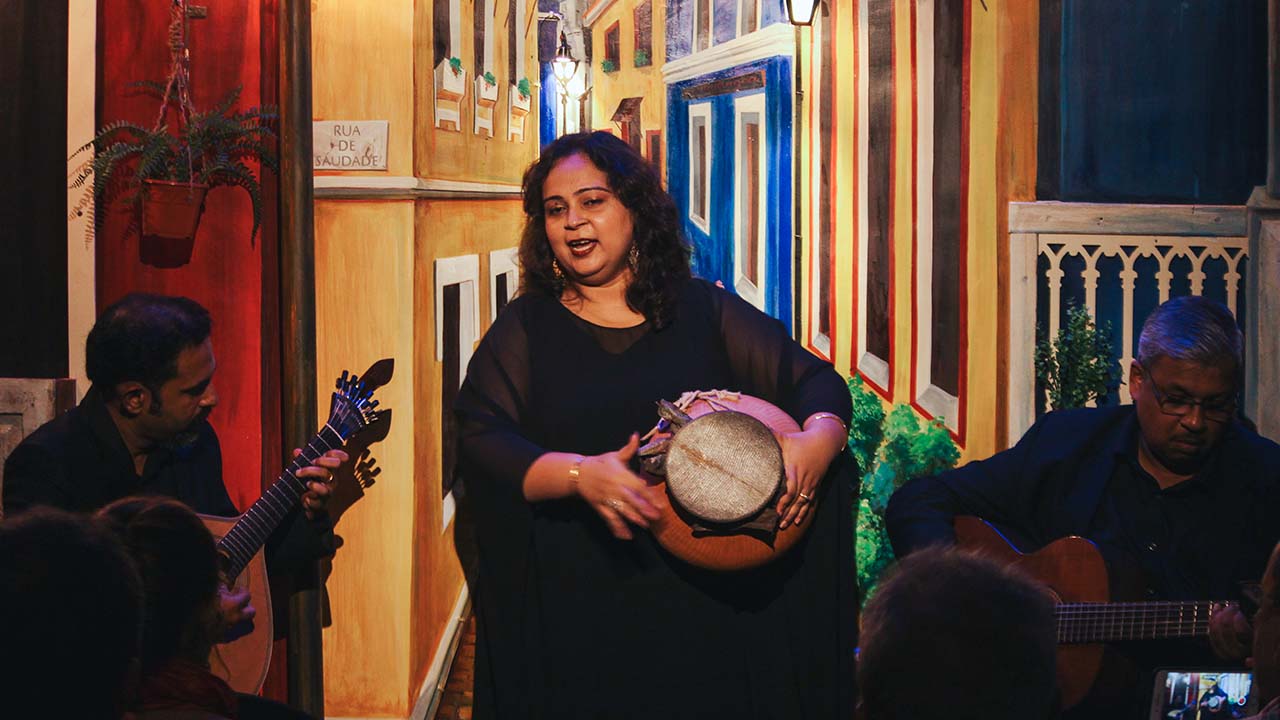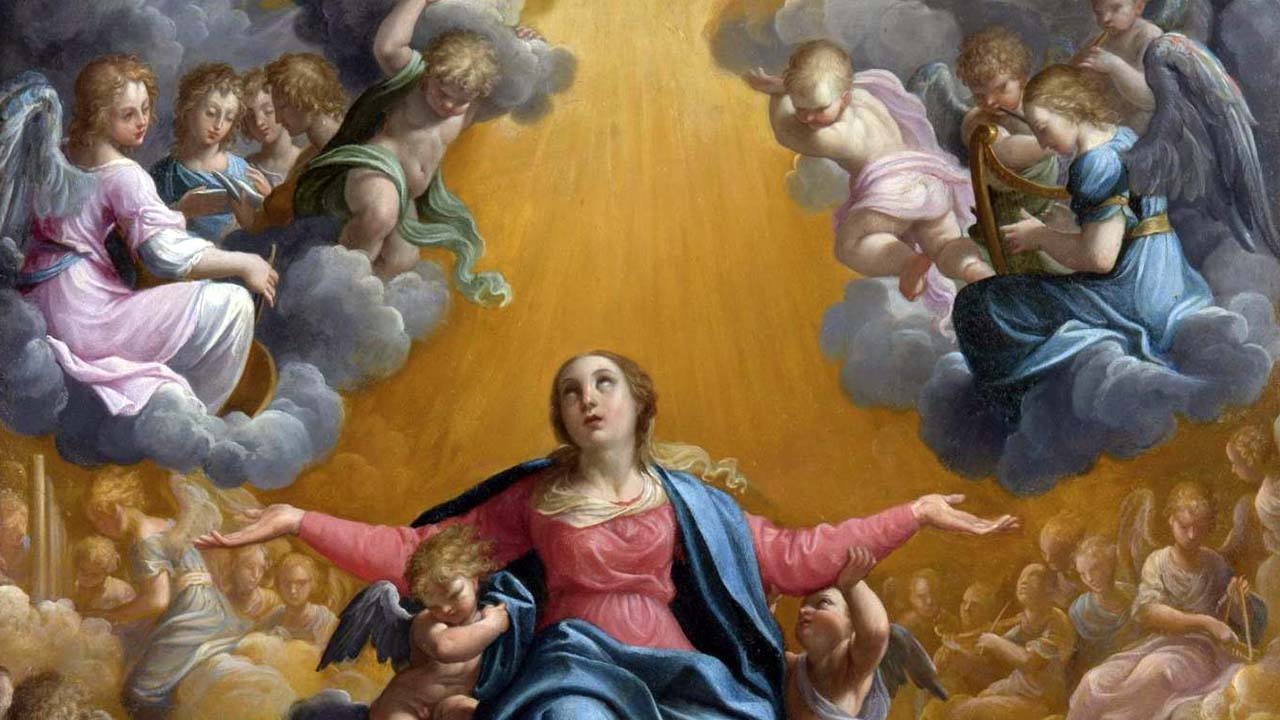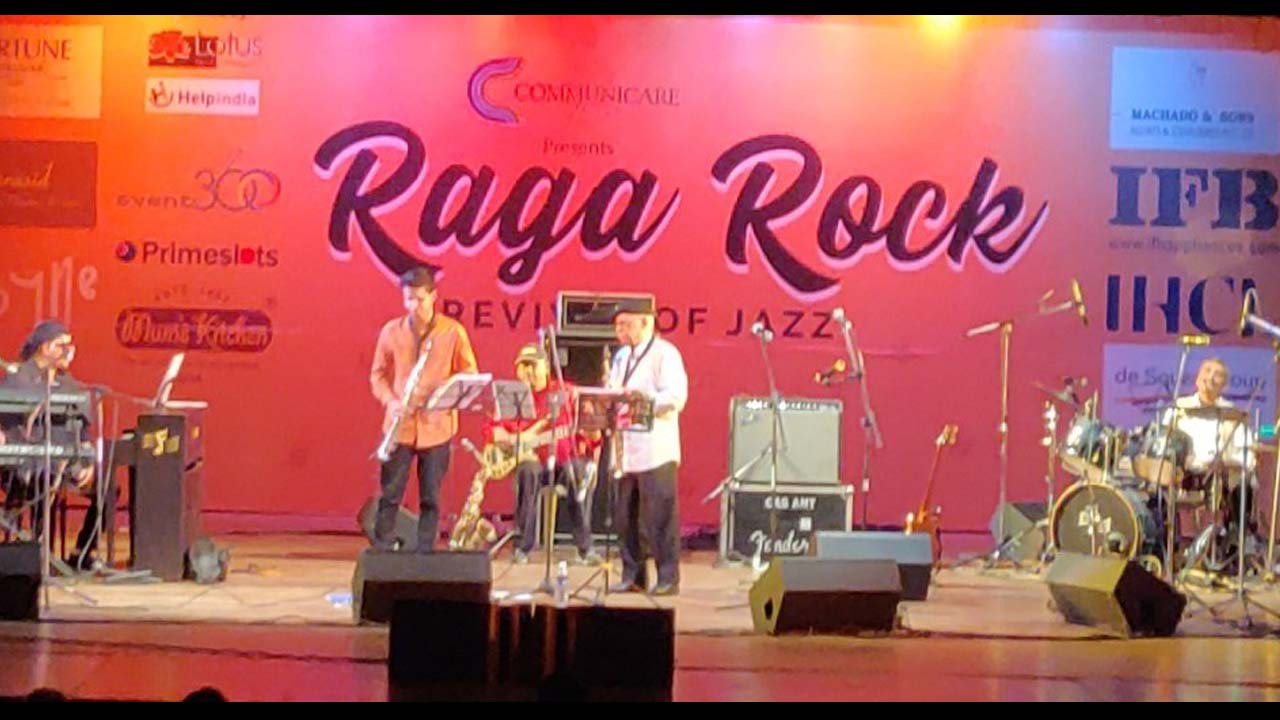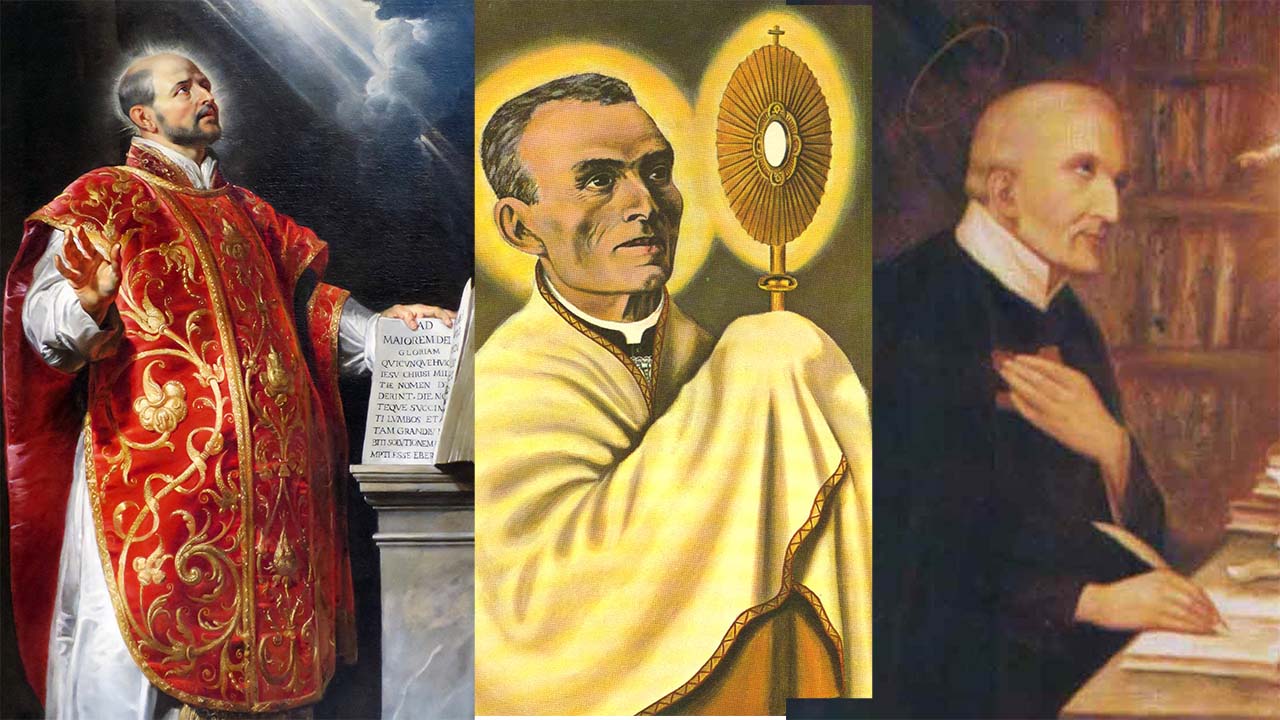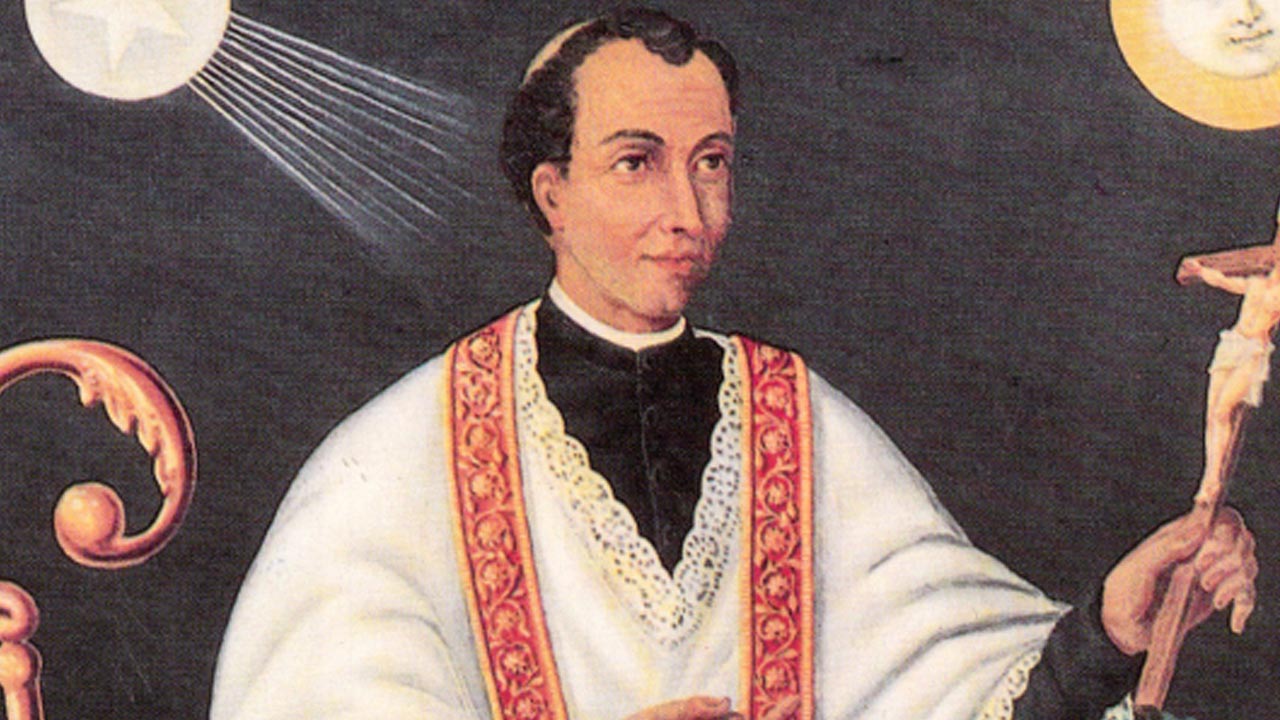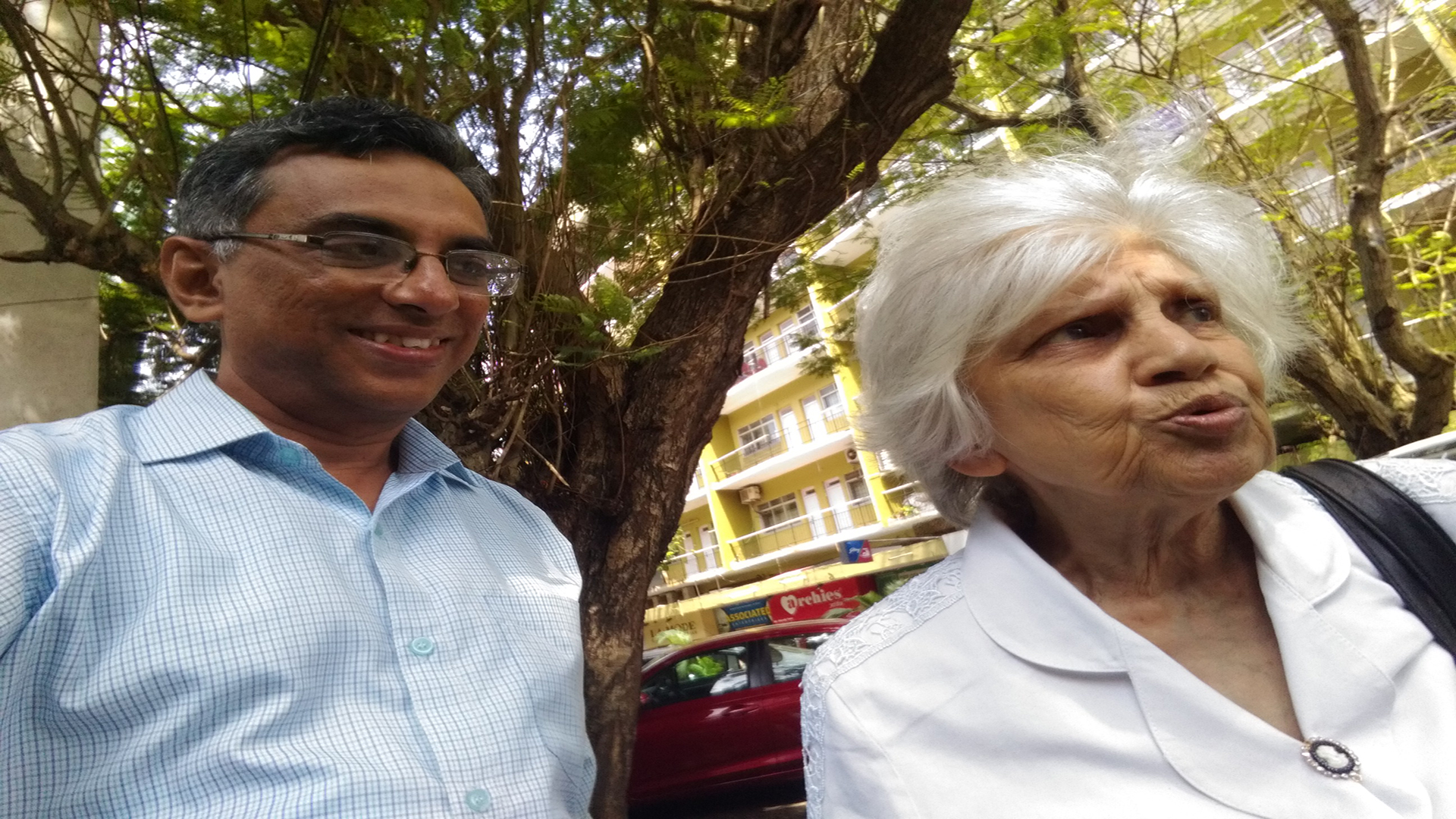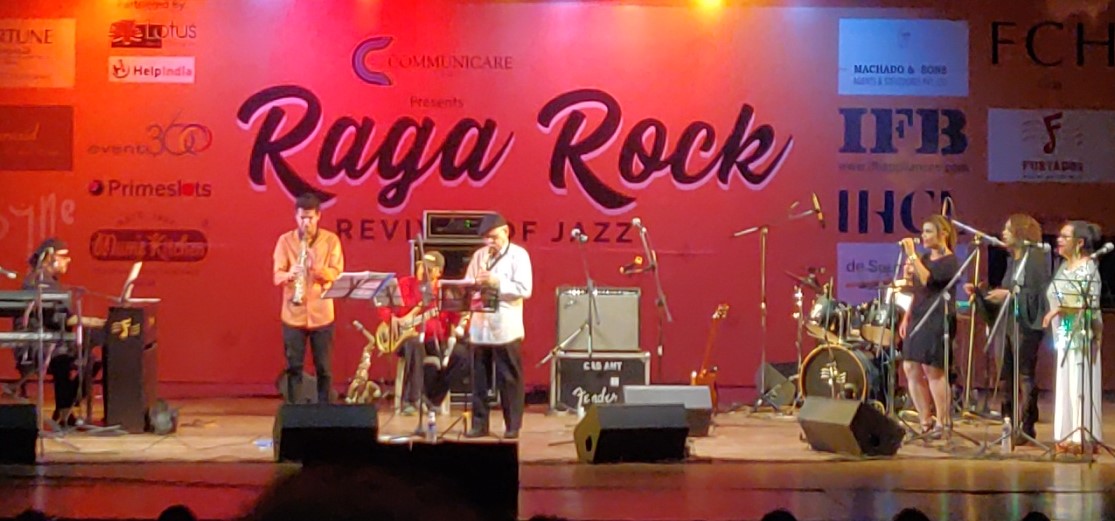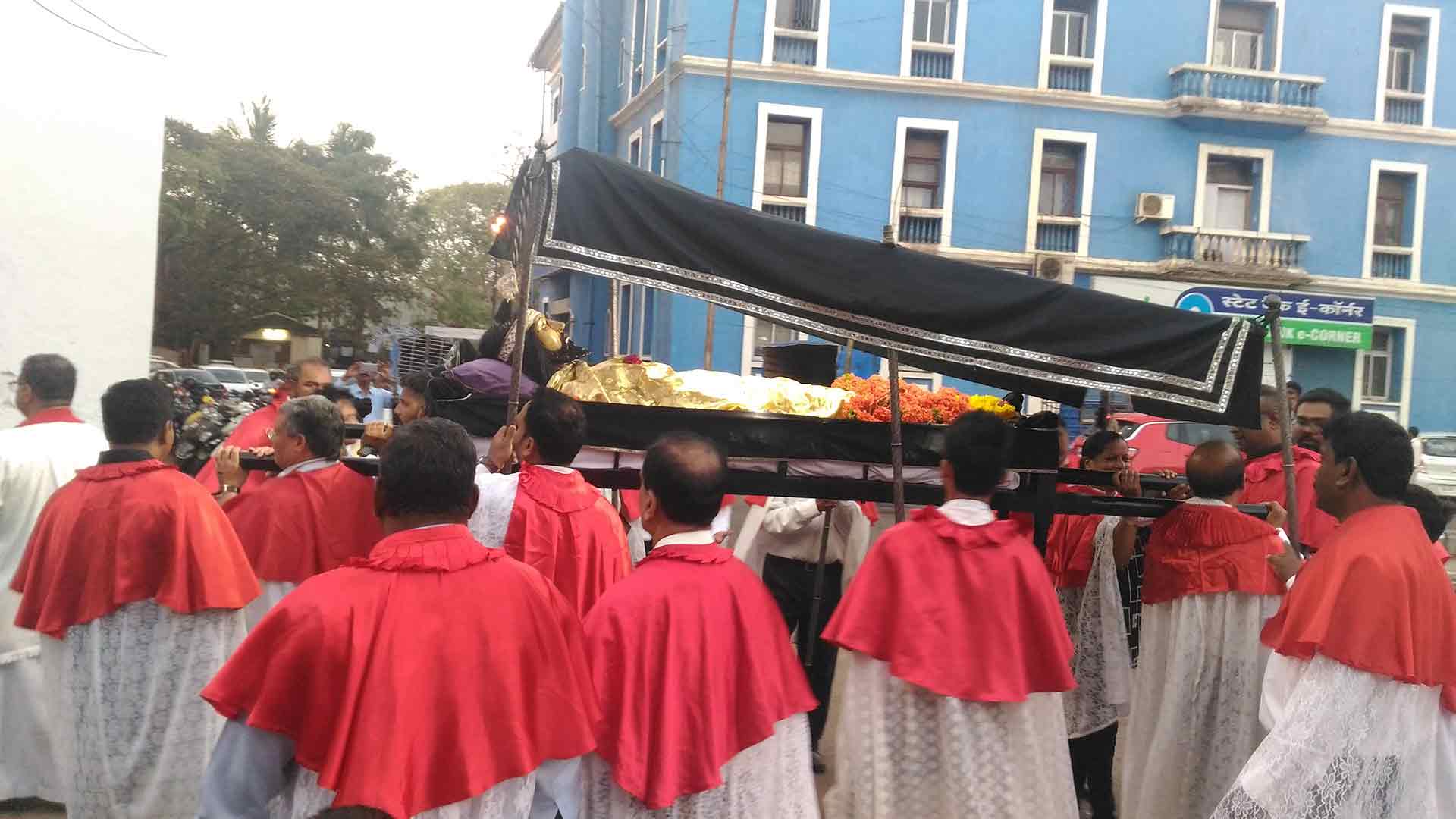Ontem estive na Madragoa…
From now on this line is gonna be on the lips of music aficionados: ‘I was at Madragoa yesterday…’
Madragoa is a popular ward of Lisbon, close to the mouth of the Tagus. They say it's named after the Madres of Goa (the Monica Sisters of the old city of Goa) who'd invested in real estate there. Except that the ‘Madragoa’ here is not the well-heeled quarter of lovely Lisboa but a music set-up at the Centre for Indo-Portuguese Arts (CIPA) in pretty Panjim! And at Goa’s Madragoa there’s fado and mandó!
The fado and the mandó are two delightful musical genres. Interestingly, both were born in the nineteenth century, one in the dockyards of Lisbon, and the other in the salons of Salcete. Did the twain ever meet? Yes, they did – here in Goa. It is not so well known that the venerable Tipografia Rangel has to its credit the publication of one of the earliest pages of the fado in Goa… But let’s leave that for another day.
Yesterday was the premiere of the world’s first fado and mandó house. Madragoa – Casa do Fado e Mandó (House of Fado and Mando) opened not to a trumpet blast but to the exquisite strumming of two guitars and the thump of the ghumot, the Goan percussion instrument par excellence. The instrumentalists were none other than Orlando de Noronha (Portuguese guitar) and Carlos Meneses (fado guitar), accompanists to one of India’s most gorgeous vocalists: Sonia Shirsat, who – surprise of surprises – doubled as a ghumot player.
It is not so well known that the venerable Tipografia Rangel has to its credit the publication of one of the earliest pages of the fado in Goa… But let’s leave that for another day.
The show began, very appropriately, with an instrumental fado titled ‘Madragoa’, composed by Orlando de Noronha, who conceived the idea of the house. It was followed up with a charming repertoire of fado and mandó: ‘Rua do Capelão’, ‘Não rias’, ‘Sogllem mhojem vidu’ and ‘Lisboa, não sejas francesa’ in the first half. The second half featured ‘Lágrima’, ‘Fala da mulher sozinha’, and two inevitable numbers, ‘Casa Portuguesa’ and ‘Adeus korcho vellu pavlo’. Earlier, they played Portuguese guitarist José Nunes’ ‘Rapsódia’, once upon a time the signature tune of Renascença (All India Radio, Panjim’s weekly programme in Portuguese), bringing back memories of the seventies, eighties and nineties.
Pleasant memories were what the spectators were found exchanging during the brief intermission, while they relished Indo-Portuguese delicacies served with love: pãezinhos com chouriço do Reino, rissóis de camarão, fofos de bacalhau, croquetes, torradinhas com patê and pastéis de nata. And they got to leisurely sip a glass of sangria as well.
The perceptive audience carried home aural images of the fado and the mandó. Then, on social media and elsewhere, they shared the joys of Indo-Portuguese culture with friends and family, saying, ‘Ontem estive na Madragoa!’
But men and women do not live by bread alone. What they equally lapped up at Madragoa was the ambience. The backdrop to the fado and mandó room is a large mural depicting a mix of Panjim, Lisbon and Coimbra cityscapes. A narrow street called Rua da Saudade; row houses painted in blue, white, yellow and red; a chapel at the end of the street; and a clock tower overseeing the goings-on in the lyrical neighbourhood.
The perceptive audience carried home aural images of the fado and the mandó. Then, on social media and elsewhere, they shared the joys of Indo-Portuguese culture with friends and family, saying, ‘Ontem estive na Madragoa!’
Blessed by the Star
It is common for Catholics in India to assume that Independence Day was timed to coincide with the Feast of the Assumption of the Blessed Virgin Mary into Heaven. This is not true. Although the Feast existed, it came to be better known and universally celebrated only after the formal declaration of the dogma by Pope Pius XII on 1 November 1950, that is, three years after the declaration of India’s political independence.Read more
Celebrating Braz and Jazz
"Raga Rock" was a much-deserved tribute to Goa-born Braz Gonsalves. Read more
Three Founders in a Row
It struck me that we have three Saint founders of religious congregations whose feasts we celebrate on three consecutive days. And all of them have a presence in Goa:
St Joseph Vaz's Letter of Bondage
Remembering Prima Maria
November 1987. I was all of twenty-two years old and had landed in Lisbon. Shortly after this I phoned a relative for whom I’d carried a little parcel from her sister Genoveva (to whom I became a sobrinho by marriage but remained first a primo, via Curtorim). Her name was Rita Maria Gomes. I’d never met her before; yet she sounded so warm that I promptly accepted her lunch invitation. Her brother Nicolau stopped over to collect the item, early the next morning, shaking me out of my jet lag: he was my only visitor at Hotel Berna, Campo Pequeno, where I’d put up in the first three days of my year-long stay in Portugal.
After my maiden Sunday Mass na terra de Camões, I headed for Carcavelos, half an hour’s journey by train from Cais do Sodré. Usually shy at a first meeting, I was nonetheless eager to see my mother Judite’s “Guirdolim cousins”.
At Oeiras, on a near-empty platform, Primo Amâncio Frias Pinto and I easily spotted each other. As he comfortably drove me home in his white Renault 10, his down-to-earth style put me at ease. And then, when Prima Maria and the family welcomed me, I noticed the glow on her face: she had taken a shine to Judite’s son. My gracious hostess had very thoughtfully invited three primos still new to me: Noémia and her children Lena and Stuart. I instantly identified the senior one (now a much-loved Tia) as daughter of Primo ‘Picu’ Stuart, who I’d been very fond of as a child… Now here was a heady mix of Neurá and Curtorim/Guirdolim, and it made my day!
I have no photographs of that memorable coming together. That was altogether another age, the pre-digital age! I vividly remember, however, that the apartment was bathed in sunlight. Prima Maria had the table laid de rigueur and served a full course meal. It wasn’t easy, but she did it! And, yes, she kept up an animated conversation, centred on Goa, our relatives and friends.
It was still a bright and pleasant afternoon when Prima Maria suggested we take a stroll in the colourful feira nearby. And soon it began to feel like home. When evening came and Primo Amâncio (who’d been my father Fernando’s contemporary at Casa de Estudantes) dropped me off to the station, I felt a sudden pang of saudade…
..........................................................................
August 2018. Years after my unforgettable passage to Portugal, I met the simpático casal at their ancestral house at Ararim, Socorro – which, meanwhile, I’d become familiar with as the home of my wife Isabel’s maternal aunt Bernadete married to Terêncio Frias Pinto. Prima Maria made a few more trips to Goa, travelling solo after her husband’s demise. Last year, we crossed paths at Panjim’s Immaculate Conception church. That’s when I quickly fixed up a lunch appointment; and unable to meet up at home, we decided on a thali at the Fidalgo.

How can we forget the people who’ve made us happy at some time or other in our lives? I’m glad I started off by recalling the lovely moments spent with her family – oh my God! – three decades ago...
As for her, she was soaked in memories. She smiled wistfully, reminiscing about her spinster days in Goa and as a young wife in Mozambique, and gave me the lowdown on her life as a widow.
A grandmother of two, pretty even at eighty, Prima Maria was proud of her Gomes ancestors who made it big in Portugal. She spoke ardently about the Veiga-Gomes kinship, and – surprise of surprises – she pulled a neat set of notes and sepia out from her handbag to confirm that the doctor-politician Pestaninho da Veiga (1849-1901), the physician-writer A. X. Heráclito Gomes (1864-1934), and the poet Mariano Gracias (1871-1931), who died in Lisbon, were indeed first cousins! Prima Maria was thus a third cousin of my mother’s; her children Rui and Lara, and I, sit a step below.
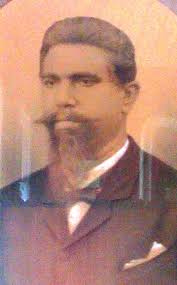
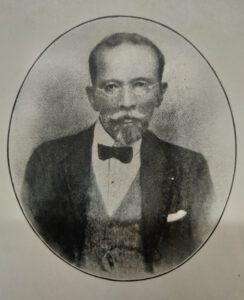
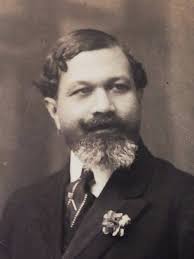
Needless to say, formal relationships are not everything; it’s the level of friendship that counts. For instance, when the infant Maria Rita da Veiga, died of bronchopneumonia, a day prior to the arrival of a baby in the Gomes household, this new-born was baptised Rita Maria. The noble gesture speaks volumes of the oneness of spirit that proceeds from life built around shared values! In any case, a rarity in our day and age, this episode endeared the new Maria very especially to my mother who, aged 3½ years, had been confused and shaken by the disappearance of her immediate junior sibling.
There are, on the other hand, myriad incidents over which one has no control whatsoever; one gets to join the dots only much later. Consider my mother’s passing, at the age of 83½ years, precisely on Rita Maria’s eightieth birthday! Doesn’t this say something about the communion of saints that often goes unnoticed even by practising Catholics?

Life never ceases to amaze us. Prima Maria, despite her aches and pains, travelled to Canada, New Zealand and Australia – aching to connect with friends and relatives – whereas I’d failed to get in touch with her brother Heráclito in Porto. I’d thought of him, even in the midst of São João celebrations there, but it had remained just that – a thought… That I finally got to meet him, thirty years later, on Facebook, is another matter entirely! We now stand in awe of this gift from cyberspace.
My first – and last – lunch invitation to Prima Maria inevitably ended, but not before my mobile phone camera – sensing our connectedness – clicked away, trying to discover facial resemblances between kith and kin… And it was saudade once more…
Still a sunny afternoon, much like the one at Carcavelos, I drove Prima Maria to ‘A Pousada’, a pensão she was staying at, in the city’s charming São Tomé ward. We said our goodbyes, and I left. When I called up after a month, I got no answer… Heaven knows why!
Até sempre, Prima Maria!
Celebrating Braz and Jazz
June 17, 2019Nalini Elvino de Sousa,Jeshurun D’Cruz,Sharon Gonsalves,Jazz in Goa,Kala Academy,Ian de Noronha,Yvonne Gonsalves,Alexyz,Neurá-o-Grande,Anthony Fernandes,Karl Peters,Lester D’Souza,Goa,Jason Quadros,Louiz Banks,Gretchen Barreto,Darryl Rodrigues,Braz Gonsalves,Neil Fernandes,Chic Chocolate,Jazz in India,Coffee Cats,Lester Godinho,Raga Rock,Panjim,Maria Meireles,Indo-Jazz Ensemble,Ajoy D’Silva,Jarryd RodriguesConcert Review
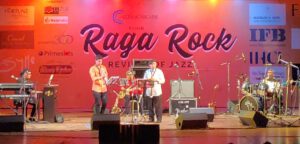
"Raga Rock" was a much-deserved tribute to Goa-born Braz Gonsalves. Thanks to this presentation by Panjim-based Communicare Trust run by Nalini Elvino de Sousa, Goa got to sing paeans to a Jazzman who keeps a low profile after decades of showmanship in the Indian metros.
At the Kala Academy, on 14 June, I was charmed by the sight of a senior citizen at the entrance, welcoming guests with a gracious smile. Many passed him by, unsuspecting that he was Braz Gonsalves himself. For sure, many jazz aficionados have heard of the man and enjoyed his music; very few would have met him in person.

A few minutes later, the very same man wearing his trademark flat cap stole the show. At 86 years of age, he regaled a packed auditorium with his magical, golden saxophone. He was joined by his good ol’ boys: Louiz Banks (who formed the great Indo-Jazz Ensemble, with Braz); Karl Peters, India’s foremost bass guitarist, and drummer Lester Godinho, not forgetting his own, musically talented wife Yvonne ‘Chic Chocolate’ Vaz, daughter Sharon, son-in-law Darryl Rodrigues, and the youngest – and perhaps the most talented of them all – his grandson Jarryd Rodrigues. “Grandfather meets grandson,” boomed Banks, who also remarked that “the legacy of Braz Gonsalves is in the safe hands of his grandson Jarryd.” They made an amazing duo.

What a spectacular evening of jazz! And the music will play on, if the revelations on stage are anything to go by: Jazz pianist Jason Quadros, Portuguese-born soprano Maria Meireles, Anthony Fernandes (bass) and the ‘cool’ Coffee Cats comprising Ian de Noronha (keyboards, bass and melodica), Neil Fernandes (guitar and vocals), Jeshurun D’Cruz (drums), Jarryd Rodrigues (alto and soprano saxophone), Gretchen Barreto (vocals), Ajoy D’Silva (trumpet), and Lester D’Souza (tenor sax).

The music segment (vocals and instrumentals) was preceded by a musical skit in which sixteen children recreated the story of Braz Gonsalves’ life which began in Neurá-o-Grande, a village my ancestors hail from. And that was an added reason for me to celebrate Braz and Jazz!
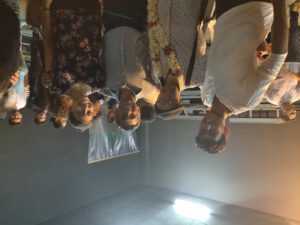
Signs of our Times
 Until 1961, official and commercial signage was, quite understandably, in Portuguese. Read more
Until 1961, official and commercial signage was, quite understandably, in Portuguese. Read more
Good Friday Procession in Panjim
April 19, 2019Sermão da Soledade de Maria,Lent in Goa,Good Friday,Church of the Immaculate Conception,Goa,Dom Lourenço de Noronha,Senhor Morte,Panjim,Capela de Dom LourençoLenten Traditions
The 3 o’clock, Good Friday service at the city church of the Immaculate Conception comprises a poignant Crucifixion tableau.
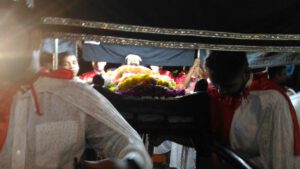
Soon thereafter, a procession of Senhor Morto (Dead Lord) on an andor (black canopied wooden platform carrying a life-size statue of Our Lord who died on the Cross) starts off, with a statue of Our Lady in trail. It wends its way through the main thoroughfares (the church square, a section of 18th June, Pissurlencar, past Azad Maidan), making a major halt to pray at the chapel formerly attached to the mansion of a Portuguese noble family. The cavalcade then proceeds via M. G. Road and Dr D. R. de Sousa, past the Garcia de Orta Garden, and up the church stairway.
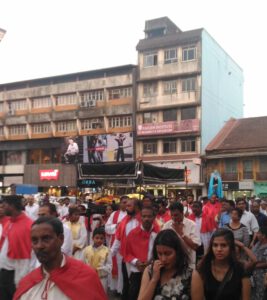
The pious march takes approximately 90 minutes. It is animated by five decades of the Marian rosary recited over speakers fitted at several points; and by Lenten hymns sung by a choir to the accompaniment of a brass band. The circuit is marked by over ten descansos (halts). At these points, penitents, all of them de rigueur, in funereal attire, flock to the two statues. Members of other religious faiths also pay their respects; many watch in awe or stand at attention (I noticed a policeman saluting).
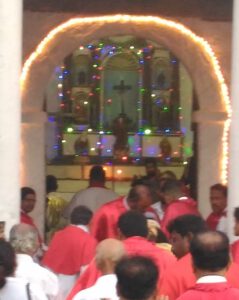
One such halt is at a quaint chapel traditionally called 'Capela de Dom Lourenço', located behind what is now the iconic Hotel Mandovi. In times past, the chapel was part of the manor belonging to Dom Lourenço de Noronha, a Portuguese nobleman, who had acquired a large estate in the then incipient city centre. After the palatial mansion was razed, the chapel was handed over to the care and possession of the city church. Alas, the venerable structure is in a state of disrepair.
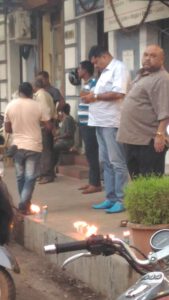
On the said route, two Hindu families (Caculó and Neurencar) traditionally offer garlands. Businesses brighten up their establishments, or simply light candles and burn incense on the adjoining pavements.
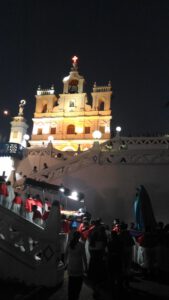
In a coda to the baroque event is a sermon (Sermão da Soledade de Maria) at a stair landing: here, from a balcony that serves as a makeshift pulpit, a priest extols the virtues of Mary and highlights her present solitude. The congregation listens in silence even while vehicle noises spoil the ambience.
The statues return to the church for final veneration. By 8 o’clock, they call it a night!
Latter-day Lessons from Lent
April 1, 2019Consumerism,Helen Keller,Étienne de Grellet,Steve Jobs,King Dom Pedro of Brazil,change of heartLent
A very important person who passed away recently is reported to have reflected profoundly on life and death, on his sick bed. Some others dismiss the story as a sham. At any rate, as the Italians say, si non è vero, è ben trovato – even if it’s not true, it’s well said. Reflections on the mystery of life and death hold important lessons for the human soul.
As Christians, we should be concerned about the life we lead, for upon that will depend our fate in the afterlife. It’s futile even for a churchman to bend over backwards to “save” a departed soul whose fate is practically sealed; and no amount of adulation can change their post-history. It is equally absurd to try and “modify” the image they’d carved for themselves. In short, it’s easier for a camel to pass through the eye of the needle than for history to be rewritten convincingly and abidingly by PR men. Truth always prevails.
Lent is an apt time to reflect on our personal history and on meta-history. The season reminds us that we are dust and to dust we will return; it points to our impermanence and to the limited time at our command. But, alas, as Helen Keller notes, “Most of us, however, take life for granted. We know that one day we must die, but usually we picture that day as far in the future. When we are in buoyant health, death is all but unimaginable. We seldom think of it. The days stretch out in an endless vista. So we go about our petty tasks, hardly aware of our listless attitude toward life.”
It is undeniable that each day brings us closer to death; then, why not prepare for it while it’s time! There should be no regrets when the hour strikes. Étienne de Grellet says very evocatively: “I shall pass this way but once; any good that I can do or any kindness I can show to any human being, let me do it now. Let me not defer nor neglect it, for I shall not pass this way again.” Truly, if we have lived with loving kindness, at the end of our earthly journey we will not fret about how history will remember us. In the memorable words of King Dom Pedro of Brazil, we will die in peace, “serenely awaiting the justice of God in the voice of history”.
But isn’t all this easier said than done? Yes; as frail human beings, we’re prone to fail. Hence, the accent should be on mending our ways and getting back on track. On the very first day of Lent, the Holy Scripture counsels us: “Rend your hearts and not your garments” (Joel 2:12). It’s a clear invitation to look inside ourselves and pluck out the evil lurking there. A time-tested prescription for a change of heart is prayer, fasting and alms-giving, provided we don’t practise our piety before fellow humans in order to be seen by them; or look dismal when we fast, like the hypocrites do; and, when giving alms, don’t proclaim it from the rooftops.
But that’s not all. In our Information Age, we might well summon up another pertinent Biblical prescription: “Let what you say be ‘yes, yes’ or ‘no, no’” (Matt. 5:37) This Biblical instruction rounds it up for our social media-savvy generation for whom praying, fasting and giving alms may not be an issue at all but taking a position may feel politically incorrect. For instance, a Christian who has had the impudence to refer to the sufferings of a politico, a mere mortal, on a par with those of Christ may well have betrayed Christ for thirty pieces of silver.
Steve Jobs, the man who hyped the Apple bite in the digital age, is also credited with a soulful quote recorded in his last days. He is said to have dubbed the modern, consumerist individual a “twisted being”. This is nothing new; it comes across as a newfound truth only because a latter-day ‘saint’ uttered it. The more important point to take in is that we shouldn’t leave plain truths such as these to startle us at the eleventh hour, when all along we’d learnt that our real treasure lies in Heaven.
We Christians who have gone through Lent year after year should have known better. Our catechesis should have set us thinking not only about life but about the afterlife as well. All things considered, Death lets us appreciate the meaning and purpose of Life – and this is perhaps one of the most important lessons we can draw from Lent.
First published in Renovação, 1-15 April 2019
and in The Stella Maris Bulletin, Lent 2019
